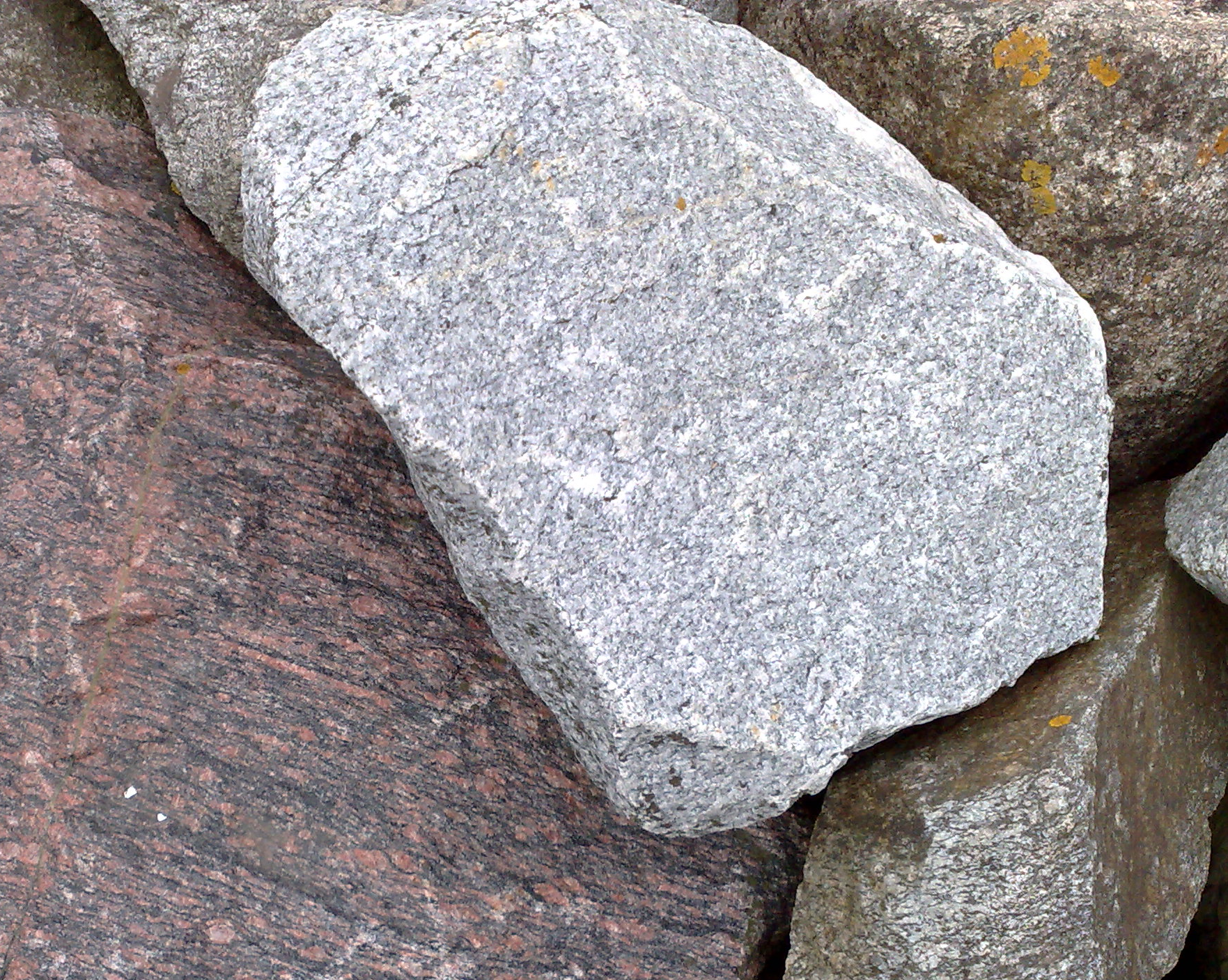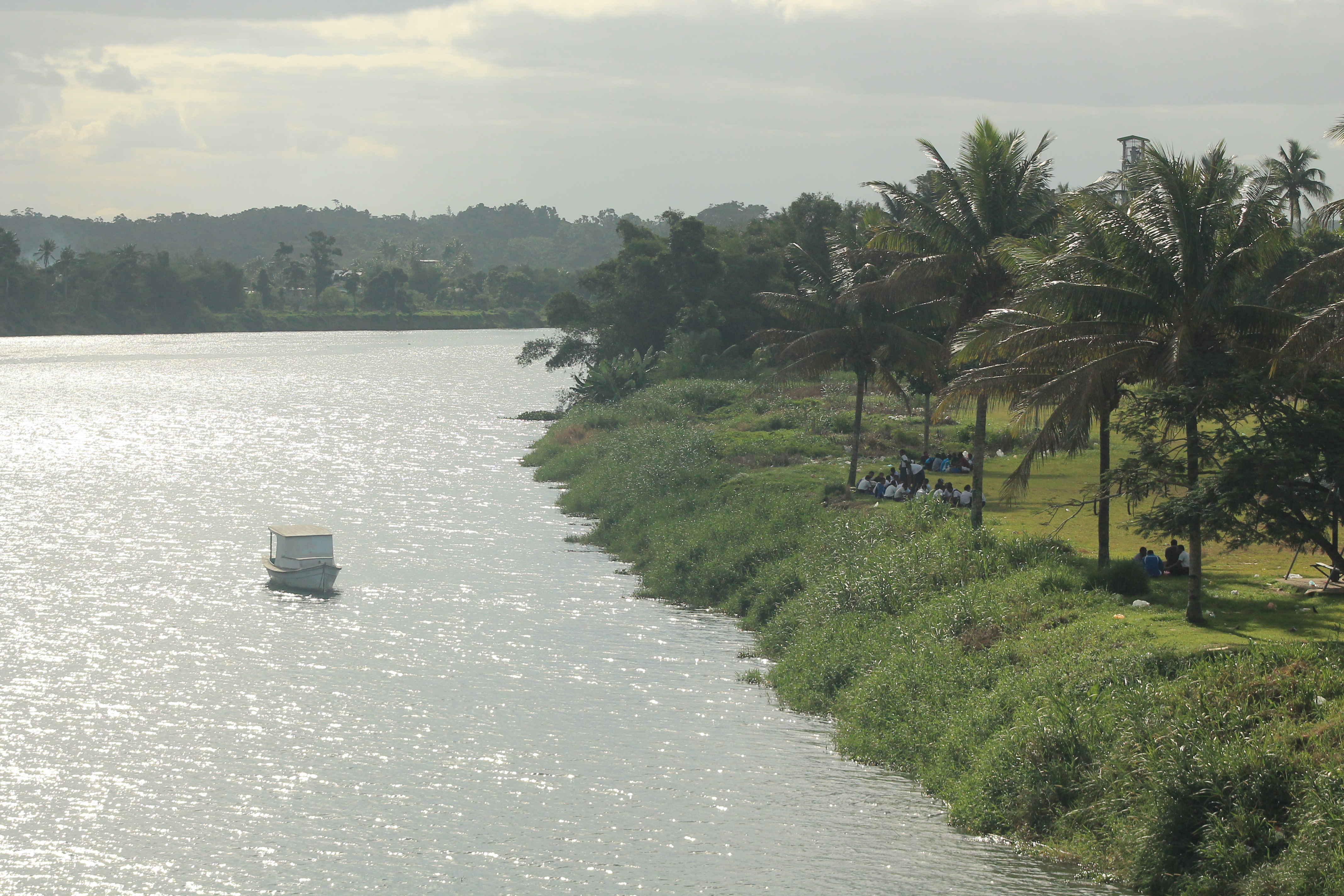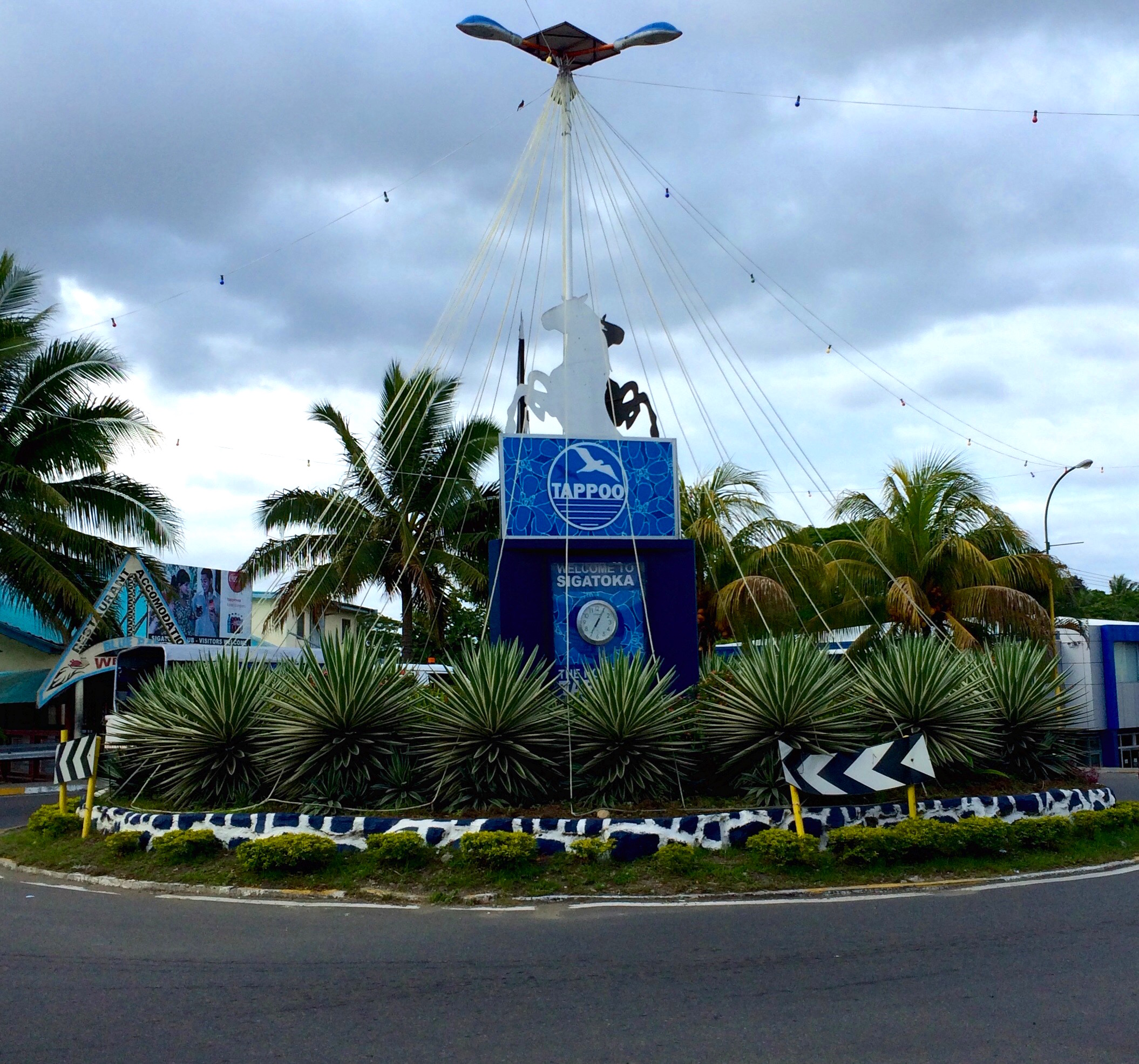|
Viti Levu
Viti Levu (pronounced ) is the largest island in the Republic of Fiji. It is the site of the nation's capital, Suva, and home to a large majority of Fiji's population. Geology Fiji lies in a tectonically complex area between the Australian Plate and the Pacific Plate. The Fiji Platform lies in a zone bordered by active extension fault lines, around which most of the shallow earthquakes in the area have been centred. These fault lines are: the Fiji Fracture Zone (FFZ) to the north; the 176° Extension Zone (176°E EZ) to the west; and the Hunter Fracture Zone (HFZ) and Lau Ridge to the east. The oldest rocks on the island are those formed during the Eocene and Lower Miocene epochs that belong to the Wainimala group. The lower portion of the group is made up of volcanic flows and volcanoclastics, which grade from basalt to trachyte and rhyolite. Geographically, this group is found south of Nadi, including on the peaks of Koromba (at 3528 feet high) and Natambumgguto (at 1 ... [...More Info...] [...Related Items...] OR: [Wikipedia] [Google] [Baidu] |
Fiji
Fiji ( , ,; fj, Viti, ; Fiji Hindi: फ़िजी, ''Fijī''), officially the Republic of Fiji, is an island country in Melanesia, part of Oceania in the South Pacific Ocean. It lies about north-northeast of New Zealand. Fiji consists of an archipelago of more than 330 islands—of which about 110 are permanently inhabited—and more than 500 islets, amounting to a total land area of about . The most outlying island group is Ono-i-Lau. About 87% of the total population of live on the two major islands, Viti Levu and Vanua Levu. About three-quarters of Fijians live on Viti Levu's coasts: either in the capital city of Suva; or in smaller urban centres such as Nadi—where tourism is the major local industry; or in Lautoka, where the sugar-cane industry is dominant. The interior of Viti Levu is sparsely inhabited because of its terrain. The majority of Fiji's islands were formed by volcanic activity starting around 150 million years ago. Some geothermal ... [...More Info...] [...Related Items...] OR: [Wikipedia] [Google] [Baidu] |
Pacific Ocean
The Pacific Ocean is the largest and deepest of Earth's five oceanic divisions. It extends from the Arctic Ocean in the north to the Southern Ocean (or, depending on definition, to Antarctica) in the south, and is bounded by the continents of Asia and Oceania in the west and the Americas in the east. At in area (as defined with a southern Antarctic border), this largest division of the World Ocean—and, in turn, the hydrosphere—covers about 46% of Earth's water surface and about 32% of its total surface area, larger than Earth's entire land area combined .Pacific Ocean . '' Britannica Concise.'' 2008: Encyclopædia Britannica, Inc. The centers of both the |
Lower Miocene
The Early Miocene (also known as Lower Miocene) is a sub-epoch of the Miocene Epoch made up of two stages: the Aquitanian and Burdigalian stages. The sub-epoch lasted from 23.03 ± 0.05 Ma to 15.97 ± 0.05 Ma (million years ago). It was preceded by the Oligocene epoch. As the climate started to get cooler, the landscape started to change. New mammals evolved to replace the extinct animals of the Oligocene epoch. The first members of the hyena and weasel family started to evolve to replace the extinct '' Hyaenodon'', entelodonts and bear-dogs. The chalicotheres survived the Oligocene epoch. A new genus of entelodont called '' Daeodon'' evolved in order to adapt to the new habitats and hunt the new prey animals of the Early Miocene epoch; it quickly became the top predator of North America. But it became extinct due to competition from ''Amphicyon'', a newcomer from Eurasia. ''Amphicyon'' bested ''Daeodon'' because the bear-dog Amphicyonidae is an extinct family of terrestr ... [...More Info...] [...Related Items...] OR: [Wikipedia] [Google] [Baidu] |
Granodiorite
Granodiorite () is a coarse-grained ( phaneritic) intrusive igneous rock similar to granite, but containing more plagioclase feldspar than orthoclase feldspar. The term banatite is sometimes used informally for various rocks ranging from granite to diorite, including granodiorite. Composition According to the QAPF diagram, granodiorite has a greater than 20% quartz by volume, and between 65% and 90% of the feldspar is plagioclase. A greater amount of plagioclase would designate the rock as tonalite. Granodiorite is felsic to intermediate in composition. It is the intrusive igneous equivalent of the extrusive igneous dacite. It contains a large amount of sodium (Na) and calcium (Ca) rich plagioclase, potassium feldspar, quartz, and minor amounts of muscovite mica as the lighter colored mineral components. Biotite and amphiboles often in the form of hornblende are more abundant in granodiorite than in granite, giving it a more distinct two-toned or overall darker appea ... [...More Info...] [...Related Items...] OR: [Wikipedia] [Google] [Baidu] |
Tonalite
Tonalite is an igneous, plutonic ( intrusive) rock, of felsic composition, with phaneritic (coarse-grained) texture. Feldspar is present as plagioclase (typically oligoclase or andesine) with alkali feldspar making up less than 10% of the total feldspar content. Quartz (SiO2) is present as more than 20% of the total quartz-alkali feldspar-plagioclase-feldspathoid ( QAPF) content of the rock. Amphiboles and biotite are common accessory minerals. In older references tonalite is sometimes used as a synonym for quartz diorite. However the current IUGS classification defines tonalite as having greater than 20% quartz, while quartz diorite varies its quartz content from 5 to 20%. The name is derived from the type locality of tonalites, adjacent to the Tonale Line, a major structural lineament and mountain pass, Tonale Pass, in the Italian and Austrian Alps. The name was first applied by Gerhard vom Rath in 1864. The term ''adamellite'' was originally applied by A. Cathrein in 1890 ... [...More Info...] [...Related Items...] OR: [Wikipedia] [Google] [Baidu] |
Stock (geology)
In geology, a stock is an igneous intrusion that has a surface exposure of less than ,Whittow, John (1984). ''Dictionary of Physical Geography''. London: Penguin, 1984, p. 513. . differing from batholiths only in being smaller. A stock has a discordant relationship with the rocks that it intrudes. Many stocks are cupolas of hidden batholiths. Some circular or elliptical stocks may be volcanic plugs, which fill the vents of now extinct volcanoes. A boss is a small stock. Examples * the Alta and Clayton Peak stocks (composed of granodiorite), near Park City, Utah * the Hellroaring Creek and Salal Creek stocks (of granite-granodiorite and quartz monzonite, respectively) in British Columbia, Canada * the Céret stock (of gabbro and diorite) in Pyrénées-Orientales, France * the Parashi stock (of tonalite) in La Guajira Department, Colombia * stocks of syenite in the Caldera de Tejeda on Gran Canaria * Ailsa Craig Ailsa Craig (; sco, Ailsae Craig; gd, Creag Eal ... [...More Info...] [...Related Items...] OR: [Wikipedia] [Google] [Baidu] |
Pluton
In geology, an igneous intrusion (or intrusive body or simply intrusion) is a body of intrusive igneous rock that forms by crystallization of magma slowly cooling below the surface of the Earth. Intrusions have a wide variety of forms and compositions, illustrated by examples like the Palisades Sill of New York and New Jersey; the Henry Mountains of Utah; the Bushveld Igneous Complex of South Africa; Shiprock in New Mexico; the Ardnamurchan intrusion in Scotland; and the Sierra Nevada Batholith of California. Because the solid country rock into which magma intrudes is an excellent insulator, cooling of the magma is extremely slow, and intrusive igneous rock is coarse-grained ( phaneritic). Intrusive igneous rocks are classified separately from extrusive igneous rocks, generally on the basis of their mineral content. The relative amounts of quartz, alkali feldspar, plagioclase, and feldspathoid is particularly important in classifying intrusive igneous rocks. Intrusi ... [...More Info...] [...Related Items...] OR: [Wikipedia] [Google] [Baidu] |
Intruded
Intrusive rock is formed when magma penetrates existing rock, crystallizes, and solidifies underground to form '' intrusions'', such as batholiths, dikes, sills, laccoliths, and volcanic necks.Intrusive RocksIntrusive rocks accessdate: March 27, 2017.Igneous intrusive rocks, accessdate: March 27, 2017.Britannica.comintrusive rock , geology , Britannica.com accessdate: March 27, 2017. Intrusion is one of the two ways igneous rock can form. The other is extrusion, such as a volcanic eruption or similar event. An intrusion is any body of intrusive igneous rock, formed from magma that cools and solidifies within the crust of the planet. In contrast, an ''extrusion'' consists of extrusive rock, formed above the surface of the crust. Some geologists use the term plutonic rock synonymously with intrusive rock, but other geologists subdivide intrusive rock, by crystal size, into coarse-grained plutonic rock (typically formed deeper in the Earth's crust in batholiths or stocks) and m ... [...More Info...] [...Related Items...] OR: [Wikipedia] [Google] [Baidu] |
Nausori
Nausori () is a town in Fiji. It had a population of 57,866 at the 2017 census. This makes it the fourth most populous municipality in the country. Situated 19 kilometers outside of Suva, it forms one pole of the burgeoning Suva-Nausori corridor. Nausori is home to three provinces Rewa, Tailevu and Naitasiri. The Rewa Bridge across the Rewa River, built by Fletcher Construction and opened in 2006, links Nausori to the capital, Suva. Economy There are two major business areas in Nausori - the town of Nausori proper, and Nakasi. A new market and bus terminal were opened in 2015, allowing for the town's future development. A major upgrade of the local airport, including a new terminal and a longer runway, was expected to get started in the first quarter of 2017. History The old town of Nausori was situated around 5 km north of the current one, heading towards Kasavu. The ruins of the old town, situated in Naduruloulou, are still there. Now, it is a tourist centr ... [...More Info...] [...Related Items...] OR: [Wikipedia] [Google] [Baidu] |
Sigatoka
Sigatoka ( ) is a town in Fiji. It is on the island of Viti Levu at the mouth of the Sigatoka River, for which it is named, some 61 kilometres from Nadi. Its population at the 2017 census was 17,622. It is the principal urban centre for the province of Nadroga-Navosa. An ornate temple, open to public and built by Hare Krishna devotees, dominates the Sigatoka skyline. Major tourist attractions include the Sigatoka Sand Dunes near Kulukulu village, two kilometres northwest of Sigatoka; and the Kula Eco Park, with some 500 birds of 100 species from many tropical countries. The town is also the principal centre for Fiji's coastal tourism belt—the Coral Coast—which has many of the country's leading hotels and resorts. History Sigatoka has a long history of settlement dating to 1000 BCE, when indigenous tribal chiefs occupied the area. In the period of contact, European settlers explored Sigatoka when they made it as part of Colonial Fiji. In the 1900s, sugarcane farming wa ... [...More Info...] [...Related Items...] OR: [Wikipedia] [Google] [Baidu] |
Nadi
Nadi (pronounced ) is the third-largest conurbation in Fiji. It is located on the western side of the main island of Viti Levu, and had a population of 42,284 at the most recent census, in 2007. A 2012 estimate showed that the population had grown to over 50,000. Nadi is multiracial with many of its inhabitants Asians, Indian or Indigenous Fijians, along with a large transient population of foreign tourists. Along with sugar cane production, tourism is a mainstay of the local economy. The Nadi region has a higher concentration of hotels and motels than any other part of Fiji. With its large Indo-Fijian population, Nadi is a centre for Hinduism and Islam in Fiji. It has the largest Hindu temple in the Southern hemisphere, and is a site for pilgrims called Sri Siva Subramaniya temple. Nadi International Airport, located 9 kilometers from Nadi, is the largest airport in Fiji. Thus, Nadi is the principal port of entry for air travelers to Fiji, even though it is on the opposit ... [...More Info...] [...Related Items...] OR: [Wikipedia] [Google] [Baidu] |
Rhyolite
Rhyolite ( ) is the most silica-rich of volcanic rocks. It is generally glassy or fine-grained (aphanitic) in texture, but may be porphyritic, containing larger mineral crystals ( phenocrysts) in an otherwise fine-grained groundmass. The mineral assemblage is predominantly quartz, sanidine, and plagioclase. It is the extrusive equivalent to granite. Rhyolitic magma is extremely viscous, due to its high silica content. This favors explosive eruptions over effusive eruptions, so this type of magma is more often erupted as pyroclastic rock than as lava flows. Rhyolitic ash-flow tuffs are among the most voluminous of continental igneous rock formations. Rhyolitic tuff has been extensively used for construction. Obsidian, which is rhyolitic volcanic glass, has been used for tools from prehistoric times to the present day because it can be shaped to an extremely sharp edge. Rhyolitic pumice finds use as an abrasive, in concrete, and as a soil amendment. Description Rhyolite i ... [...More Info...] [...Related Items...] OR: [Wikipedia] [Google] [Baidu] |


.jpg)







